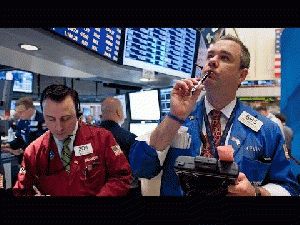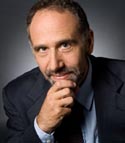Reprinted from AlJazeera America

Markets Rise on Strong Earnings But Underlying Weakness Persists
(Image by TheStreet, Channel: TheStreetTV) Details DMCA
The decision by the Federal Reserve Board to raise interest rates last week can be seen as a vote of confidence in the strength of the economy. Unfortunately, the Fed's optimism doesn't carry much sway with the economy. We are likely to see considerable weakness in the year ahead, with millions of people either unable to find full-time work and tens of millions unable to get the wage increases that would allow them to share in the gains from productivity growth.
To be clear, a rate hike of 0.25 percentage points is not a big deal. But its purpose and effect is to slow the economy and the rate of job creation. In spite of the enormous improvements in the economy over the last five years, the labor market by many measures, such as the percentage of people employed or the number of involuntary part-time workers, still looks like it's in a recession. In this context, the Fed's rate hike looks to be mistake.
The economy has been growing at slightly more than a 2.0 percent annual rate over the last year. The economy has had roughly the same rate of growth over the last five years. The Fed's Open Market Committee that sets interest rates expects the growth rate to pick up slightly to 2.4 percent in 2016. They also expected a pickup in growth the prior four years. It is not clear there is much basis for this moderately optimistic perspective.
In assessing the prospects for growth, the first place to look is always consumption, which accounts for 70 percent of GDP. Consumption grew by slightly more than 3.0 percent over the last year. This was fueled in part by healthy job growth and the plunge in energy prices that freed up more than $100 billion (0.6 percent of GDP) for spending in other areas.
It is difficult to see how this pace of consumption growth can be sustained in 2016. Job growth was likely to slow even without the Fed raising rates. This could be offset by more rapid growth in wages, but there is not much reason to expect much of a pickup here.
The average hourly wage series that is reported with the monthly unemployment data does show a very modest acceleration in the rate of wage growth, from 2.2 percent last year to 2.7 percent in the most recent data, but other series actually show a downward trend. Most notable the Bureau of Labor Statistics' Employment Cost Index shows wage growth of just 2.1 percent over the last year. Total compensation growth was even slower at 2.0 percent as benefits rose less rapidly than wages.
Without getting into a technical discussion of the merits of various wage series, let's just say that those betting on stronger wage growth leading to stronger consumption growth are likely to be disappointed. In terms of other factors spurring consumption, higher interest rates pretty much guarantee that less money will be freed up through refinancing mortgages. And, while no one has a crystal ball to forecast oil prices, we can be absolutely certain they will not fall by another $60 a barrel. This means we will not see the same sort of boost from lower energy prices in 2016 that we saw in 2015.
Consumption growth is likely to be weaker in 2016 than in 2015, but it is hard to see a sector with stronger growth. There was strong growth in residential construction in 2015. This is likely to continue next year, but more likely at a somewhat slower pace due to the fact that most of the recovery in this sector has already occurred. Non-residential construction may take a serious hit as rapid building has led to a serious oversupply of office and retail space in many cities.
The prospect of higher interest rates in the United States and economic weakness elsewhere has caused the dollar to rise against most other currencies. This makes our goods and services less competitive in the world economy. The result in 2015 was a worsening of the U.S. trade deficit. The trade deficit is likely to expand further in 2016, especially if we see additional Fed rate hikes putting upward pressure on the dollar.
A larger trade deficit will be a direct drag on growth, but it is also likely to reduce investment. Recent months' data on equipment investment have been especially weak, with 2015 levels running roughly even with year earlier levels.
The only remaining sector is government spending. Although last week's budget deal prevented scheduled cuts from taking effect, there will be at best a very modest boost to government spending in 2016 compared with 2015.
In sum, the cumulative picture makes it look like 2016 will be weaker than 2015. We may well see a growth rate under 2.0 percent and it is easy to envision scenarios, for example a collapse in office construction, in which growth will be closer to 1.0 percent.
This is not a question of guessing scores in a football game. Weaker GDP growth will translate into fewer jobs. That means both the suffering of the unemployed and less bargaining power for workers who have jobs, and therefore smaller wage gains. In short, the Fed should be much more concerned about the economy's continuing weakness than the prospect its strength will lead to spiraling inflation. Last week's rate hike should be the last one for a long time.





